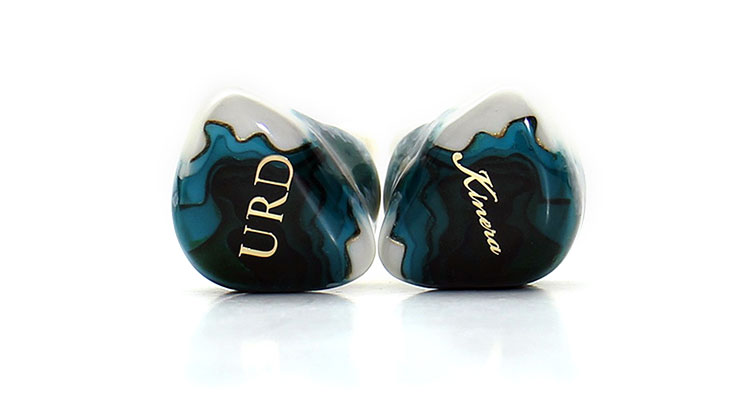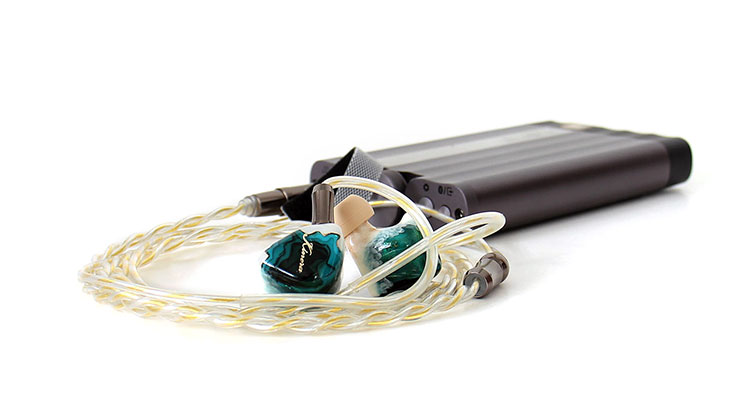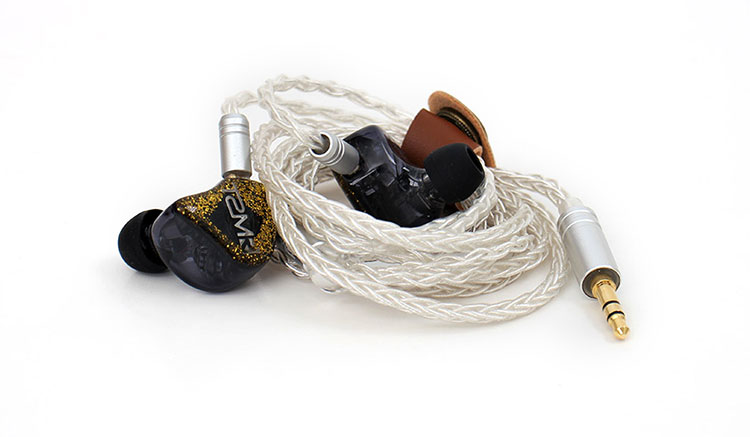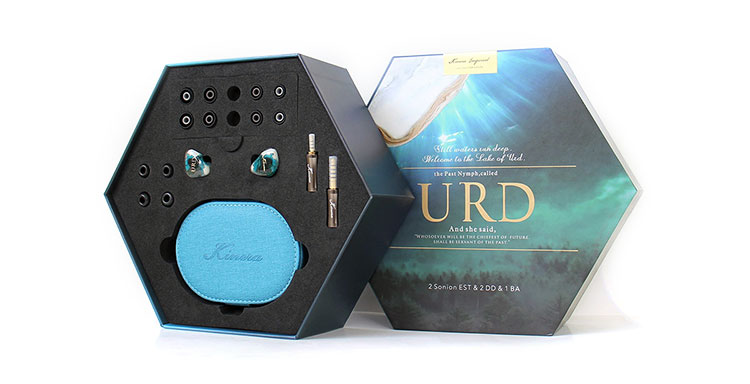Synergy
Efficiency
The URD has a peculiar character in that it has a high level of efficiency but at the same time you need to raise the volume higher than usual to obtain decent volume levels when you want to listen to low or medium volume levels.
The 20Ω rating and the 107dB sensitivity would make you assume that the URD is very efficient but to me, it acts more like a 50Ω IEM, especially at the bottom range of volume.
I think one of the reasons the Sonion tweeters were safely tuned along with the rest of the array was done as to keep detail high enough while maintaining a gentle mannerism but mostly to keep hiss down.
There is some susceptibility to hiss but you have to use a high power amp with a high noise floor to hear any, but not with any type of amplifier I would recommend.
Pairings
The Kinera URD does have specific needs but it’s not finicky in the sense that yes, it sounds good with low powered gear but it sounds best with something that has decent power and fidelity. This IEM will reveal flaws in amplification but I would not use the URD as a reference point for the particular type of use.
Any good quality DAP or source such as the iFi Audio xDSD Gryphon or the iBasso DX300 will do and most dongle DACs such as the Cayin RU6 but again, I would stick to balance out equipped dongles and use their 4.4mm balanced end exclusively to make sure these are correctly powered.
I would say anything over a watt would be overkill and the URD does hit a power limit and can be overpowered more so than other similar IEMs. This however makes it a perfect IEM for portable use since it’s not prone to hiss and doesn’t require tons of power to sound great.
Select Comparisons
Kinera Imperial Skuld
Price $550.00
Technical
The more I think about it, the more I realize how many similarities these two IEMs have, not only in sound signature but in the IEM shell shape, the weight, and they even come packed in a similar box with a similar set of ear tips and accessories.
The Skuld has an all-balanced armature driver configuration that is made up of six BA drivers which are mounted in a 2+2+2 setup and configured with a three-way crossover just like the URD.
Design
The Skuld is almost a photo negative of the URD. You could almost consider this a choice between a light or dark theme. The display colors are black and blue with gold leaf contrasting the white and light blue hues of the URD. The color schemes are opposites, yes, but the shape of the IEM shells are practically identical.
One change that occurred with the URD which is a welcomed one is the redesign of the stock cable and this time around Kinera went with a modular design that ditches the long adapters for tips that look stock once installed on the cable assembly.
Performance
Wow, Déjà vu because both these have basically the same sonic characteristics, especially within the midrange and treble regions. They take on the same fatigue-free soft mannered character but I still feel the Skuld has perhaps a couple more decibels of extra low end plus they seem a touch warmer.
They both have a fairly wide stage with good height more so than depth but the midrange of the Skuld seems pulled back some against the URD but pulls off more depth.
So the bottom line here is that the Skuld has a better low-end response, a pulled-back midrange, and perhaps a warmer treble response with all the rest being the same including soundstage, timbre, and temperament.
TANSIO MIRAI Land
Price $ 599.00
Technical
This IEM has a particular feature that none of the others in this lineup have and that’s the ability to be a chameleon and act out the part of a few different IEMs by using DIP switches to raise or lower any of the three parts of its 3-way crossover in order to modify its overall stock sound characteristics.
Other than that both IEMs have many similarities. For example, the TANSIO MIRAI Land uses 2 EST tweeters but does not specify if they were made by Sonion however the drivers seem similar and are even the same composite type. The Land does have a beefier midrange array but was tuned not to be fatiguing or too forward.
Design
Both IEMs are similar in construction and both use medical-grade resin for their shell construction with the inclusion of artistic faceplates decorated by hand. Both even have a similar configuration in that both use a three-way crossover section. The only difference is that the Land has an extra driver and a total count of six drivers instead of five.
While you get more drivers with the TANSIO MIRAI Land you get fewer accessories. For one, the Land only comes with six tip sets while the URD comes with a total of 15 sets.
The other lack I found is that although I might like the wire that was used to make the Land cable more so and is the lightest one of the pack, connectivity lacks in options because you only get a 3.5mm TRS option while the other three in this comparison include swappable tips, modular designs and offer 3.5mm, 2.5mm and a 4.4mm options.
Performance
Once again, the Land seems to be tuned similarly and to be close to neutral but a slight elevation in mid-bass response is what differentiates it from flat versus the URD which has a flat mid-bass and also drops a few decibels below 45 Hz.
Another characteristic that differentiates the Land from the URD is that the Land is slightly more forward and upfront and is best for those jamming sessions where you want to crank things up a bit in volume.
The TANSIO MIRAI Land although not advertised as having Sonion tweeters still muster up some similarly airy highs and they also image very well. Actually, the higher the frequency, the more the imaging seems to improve. The Land seems the best at rear projection but honestly that is not something that is needed most of the time.
FiiO FH9
Price $599.99
Technical
The FiiO FH9 is the party animal of the pack with a seven-driver array and a four-way crossover that produces more wow factor and impact on first impression. The 13.5mm bass driver might have something to do with it along with a six BA array to keep up with it.
The FH9 also comes very well equipped with 16 tip sets, and an eight braid cable with modular ends, and since it’s the only IEM of the bunch that uses MMCX connectors FiiO also includes a removal tool.
Another feature unique in this comparison and unique to the FH9 is the inclusion of interchangeable output nozzles that alter the FH9’s sonic characteristics and you get a total of three.
Design
The FH9 probably has the best wire of the bunch but it’s also the heaviest of the bunch and that also goes for the IEM shell assemblies. These have a fairly hefty feeling but they also seem the most robust as well and seem to be able to take a beating.
Another major point here is that the FH9 all-metal shells have a semi-open back design to help vent those drivers. FiiO usually musters up a bag full of tricks within their IEMs.
For example on the FD5 but the FH9 seems to be a raw multi-driver setup that feeds the sound output of the drivers directly at you with nothing in between which probably is what gives them their somewhat forward character.
Performance
The FH9 has the most presence and forwardness of the bunch and seems to be the more comfortable one at high volume levels and they certainly pack a punch, more so than the others so they win the party animal award.
The FH9 has more wow factor upfront but some people prefer a more tame experience. For example, the bass response from the FH9 is punchy and hits hard while the URD is soft-mannered but that might be what you want due to listening fatigue.
One observation I did make with the top end of the URD and the Land. To be honest I think the two models mentioned do high frequencies the best and perhaps edge out upfront on the URD in particular.
One thing I also noticed is the almost nonexistent amount of hiss these models reveal and it seems these IEM makers have a good grip on the matter but of all the IEMs in this comparison, the FiiO is the most prone but, oh the fun.
Our Verdict
This comparison was more of a journey through a small list of popular IEMs and the road started with the most softly mannered model and ended with the most aggressive model and that is exactly what we are looking at here.
The Kinera URD might lack a wow factor but makes up for it by being the least fatiguing and perhaps the best at midrange and more so at high-frequency production. They might not sound as impressive at first but after a long listen you start appreciating the high level of detail and then realize how much time has gone by and that’s the point.
I do feel like Kinera clammed up a bit and went a smudge too safe. They perhaps should have been more confident in their driver selection and pushed them a bit more because if you crank up the equalizer on the URD driver array they can oomph with the rest. However, you have to tickle them for them to crack a smile, or at least on you.
Kinera Imperial URD Specifications
- 2 Sonion EST + 2 Titanium Crystal Diaphragm Coaxial DD + 1 Kinera Customize 11021 BA
- Impedance: 20 ohm
- Sensitivity: 107db±2db
- Frequency Response: 5Hz-50kHz
- Modular 6N OCC + OCC with Silver Plated + OCC with Gold Plated Cable
- Plug with 2.5mm, 3.5mm, and 4.4mm









